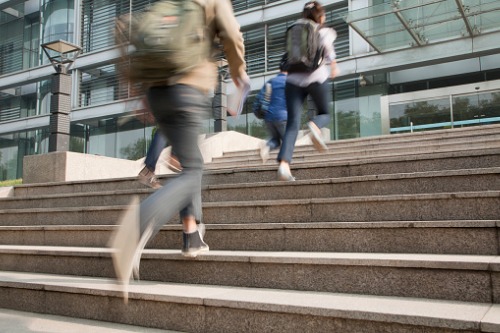
It is a vexed question as to whether our schools should continue to stay open given the pandemic that COVID-19 has become.
Prime Minister Scott Morrison has made clear his view that they should stay open, supported by that of our Chief Medical officer, Dr Brendan Murphy who says that while COVID-19 is spreading rapidly, children have “very few instances of clinical disease”.
The Victorian Chief Health Officer, Dr Brett Sutton, is of the same view, noting that, “there is currently limited information on the contribution of children to transmission of COVID-19, and that the WHO-China Joint Mission noted the primary role of household transmission observing that children tended to be infected from adults.”
Notwithstanding the views of our Prime Minister, endorsed by our Chief Medical Officers, on the ground in our schools a significant and increasing number of parents are choosing to keep their children home as a preventative measure. At our school, for example, student absenteeism has grown daily in the past week with now over 140 students (22 per cent) absent from school on a daily basis. This is not an uncommon trend, with some other schools experiencing daily student absence rates of over 50 per cent and rising.
Interestingly, this trend is in defiance of Prime Minister Morrison’s advice to parents when he says, “Obviously we are concerned about the health of the kids, but there is only one reason for kids to stay at home, and that is if they’re unwell.” The fact that significant and increasing numbers of parents aren’t listening to our PM on this crisis, should be of concern to him.
The arguments for closing our schools centre on several points. Firstly, schools are known to be hot-beds for the transmission of colds, influenza and a variety of respiratory infections. Bringing, in many cases, hundreds of students with staff together daily for 6 hours, in the context of limiting mass social gatherings of no more than 100 people in order to minimise the risk of COVID-19 transmission, is a moot point.
Secondly, too little still remains definitively known in relation to the level of COVID-19 transmissibility by children. For example, whilst it is true, that to date as the Chief Medical Officer, Dr Brendan Murphy, says, “While COVID-19 is spreading rapidly, children have very few instances of clinical disease,” that ought not provide too much comfort. Our COVID-19 testing regime, is stretched to the limit, with all bar those people presenting under certain limited criteria, not being tested. Anecdotal it may be, but we have no idea how many people, including children, are slipping through the system, because they are A-symptomatic or because suffering only very minor symptoms at all. Evidence to date suggests children may well fall into these categories.
The argument that keeping children at school, rather than be at home and cared for by say, elderly grandparents, reduces the risk of jeopardising the health of grandparent carers has superficial merit. Nonetheless, a close examination of this argument reveals some gaping weaknesses. For instance, the longer that children remain at school in the current climate, statistically, they are at greater risk of at the minimum becoming unwitting carriers of COVID-19. With school holidays soon to commence, is it not reasonable to assume that grandparents called on to care for children in the holidays will be at greater risk of infection then than now?
From an economic perspective, school closures will undoubtedly have a profound effect. So too have all other measures, all designed to minimise the spread of COVID-19 across our broader community. The longer we take to curtail this pandemic, the longer will be the damaging economic impact of COVID-19 on all of us. Put another way, who would be prepared to argue that keeping our schools open now will not lead to an increase in the spread of COVID-19? The only potential long term economic benefit of keeping our schools open now, would be if we could be certain that keeping them open will not have any impact. If not, we will all pay a greater long term price. So much it can be argued, is arbitrary, in relation to public announcements. Take for instance Prime Minister Morrison’s statement that if schools close, then it must be for 6 months. Why 6 months, not a fortnight with which to start? The COVID-19 landscape is changing almost by the hour in these surreal times. How can Mr Morrison be so certain? Flexibility is a wonderful attribute to have in times of shifting sands. Start with a fortnight and then review the situation. Who really knows how long COVID-19 will prevail? It’s a fair bet to argue that the longer we take to close schools the more likely it is that they will have to close for 6 months. Why take that risk?
There is also the question of the wellbeing of our 50,000 plus school staff across our state who are being required to attend work every day of the week, many in schools with well over a total of 100 adults and children in close proximity to each other for 6 hours. As a member of the teaching profession, I find it most disappointing to say the least that very little attention by our leaders, in their media comments has been given to the wellbeing of school staff. Think about it – over 50,000 people go to work in Victoria’s public schools alone, every work day. They matter too, because without them fit and well, our children will suffer too and the ripple effect will engulf us all.
Henry Grossek is the Principal of Berwick Lodge Primary School


